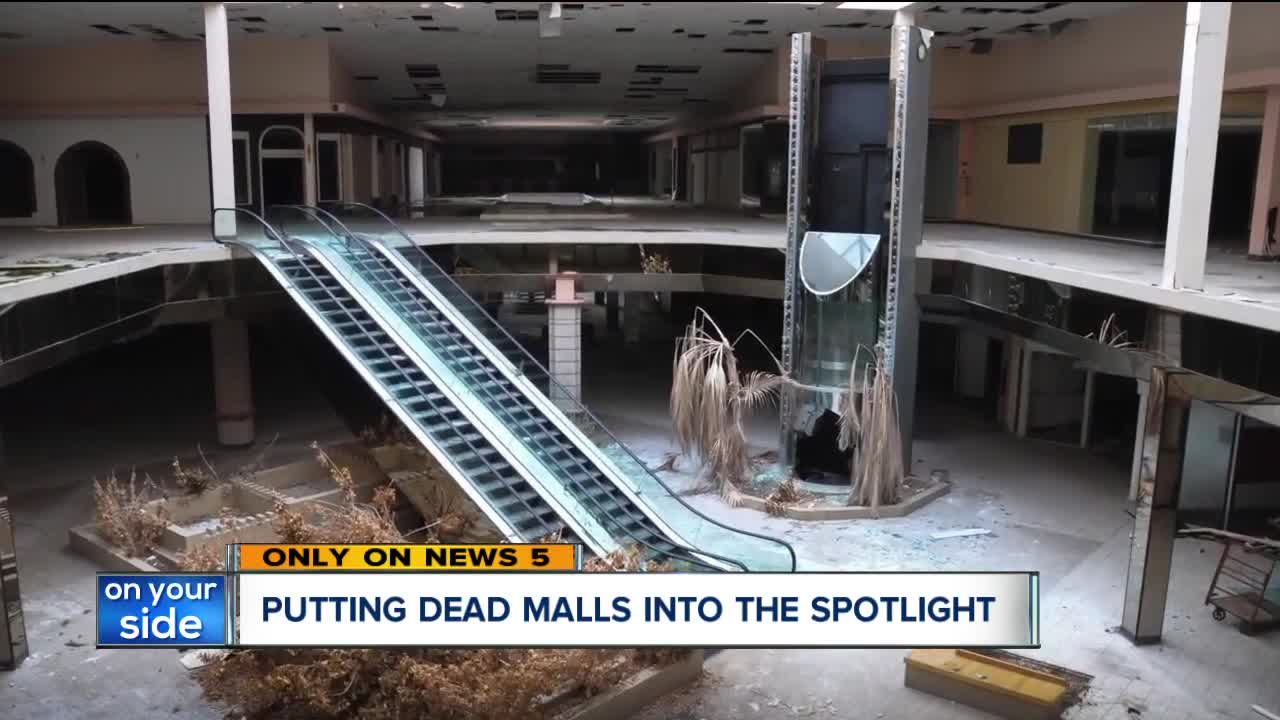AKRON, Ohio — Randall Park, Euclid Square and Rolling Acres: Three former malls turned decaying spaces that, over the years, Northeast Ohio has moved on from.
Those once empty spaces, however, have been or soon will be transformed into expansive Amazon fulfillment centers. For Seph Lawless, a world renown photographer and Cleveland native, it is bittersweet and ironic, especially considering his new book about how abandoned shopping malls will soon be distributed through those fulfillment centers.
Earlier this month, the Akron Beacon Journal reported that blueprints distributed to interested contractors confirmed what had long been suspected: Amazon would be building one of its trademark gargantuan fulfillment centers at the former Rolling Acres Mall site. The former mall has since largely been demolished after it largely went vacant after the Great Recession. Amazon’s apparent interest in the property follows similar shopping mall-turned-fulfillment center projects at the former sites of the Randall Park Mall and Euclid Square Mall.
Lawless, a native of Olmsted Falls who currently lives in Cleveland, has been inside all three both as a kid and as a professional photographer. Rolling Acres, however, will always have a special place in his memory.
“To walk in there while it was open, while it was thriving and then, of course, years later in a decayed state was hard to see,” Lawless said. “It was very emotional for me.”
Over the years, Lawless has captured the evolution of decay at the former hubs of commerce. Rolling Acres was especially photogenic.
Glass store fronts were shattered or cracked, resembling the spider webs that occupied every dark corner. Trees and shrubs in the common areas had long withered away. Broken by vandals, the skylights provided rooftop access, allowing inches upon inches of snow to blanket the mall’s lobby. The stairs lead nowhere. Dark voids of long forgotten shops and storefronts dot the mezzanines like constellations in the night sky. The once marquee water fountain had become just a maze of twisted piping, reaching above the cracked tiles like tentacles.
It is one part beauty and another part tragedy.
“These were gigantic chat rooms before the internet even existed,” Lawless said. “These malls for us were… an intricate part of our culture in our society. These were communal spaces. We went here to meet and hang out. Parents dropped off their kids on a Saturday and didn’t think anything of it. You know, it’s sad to see. The fact that Amazon now is building a facility on top of it I think is really poignant. It’s a sobering view of how we consume things, how we shop now.”
Among his photos of other abandoned malls across the country, Lawless’ viral frames of Rolling Acres, Randall Park and Euclid Square propelled him into the international limelight. By capturing the very essence of the American shopping mall, its expansive spaces and gradual decay, Lawless’ work evoked strong memories for many. Although Lawless has also documented other abandoned spaces, including amusement parks, towns and sports venues, his photos of dead malls have proved to be the most popular, he said. Those photos have been featured in several books.
“They were connecting with the abandoned mall images mores than any other project I was doing at the time and even to this day,” Lawless said. “That’s not because they love shopping malls so to speak. They miss what was there and what it meant to them growing up.”
Lawless’ newest book titled ‘Abandoned Malls of America: Crumbling Commerce Left Behind’ includes photographs from more than 20 malls across the country. When the book releases later in the spring of 2019, it will be sold through online retailers like Amazon.
It will likely be distributed through fulfillment centers like the one taking the place of Rolling Acres.
“Shipping from facilities here from the same malls that once sat here. It’s very ironic,” Lawless said.


